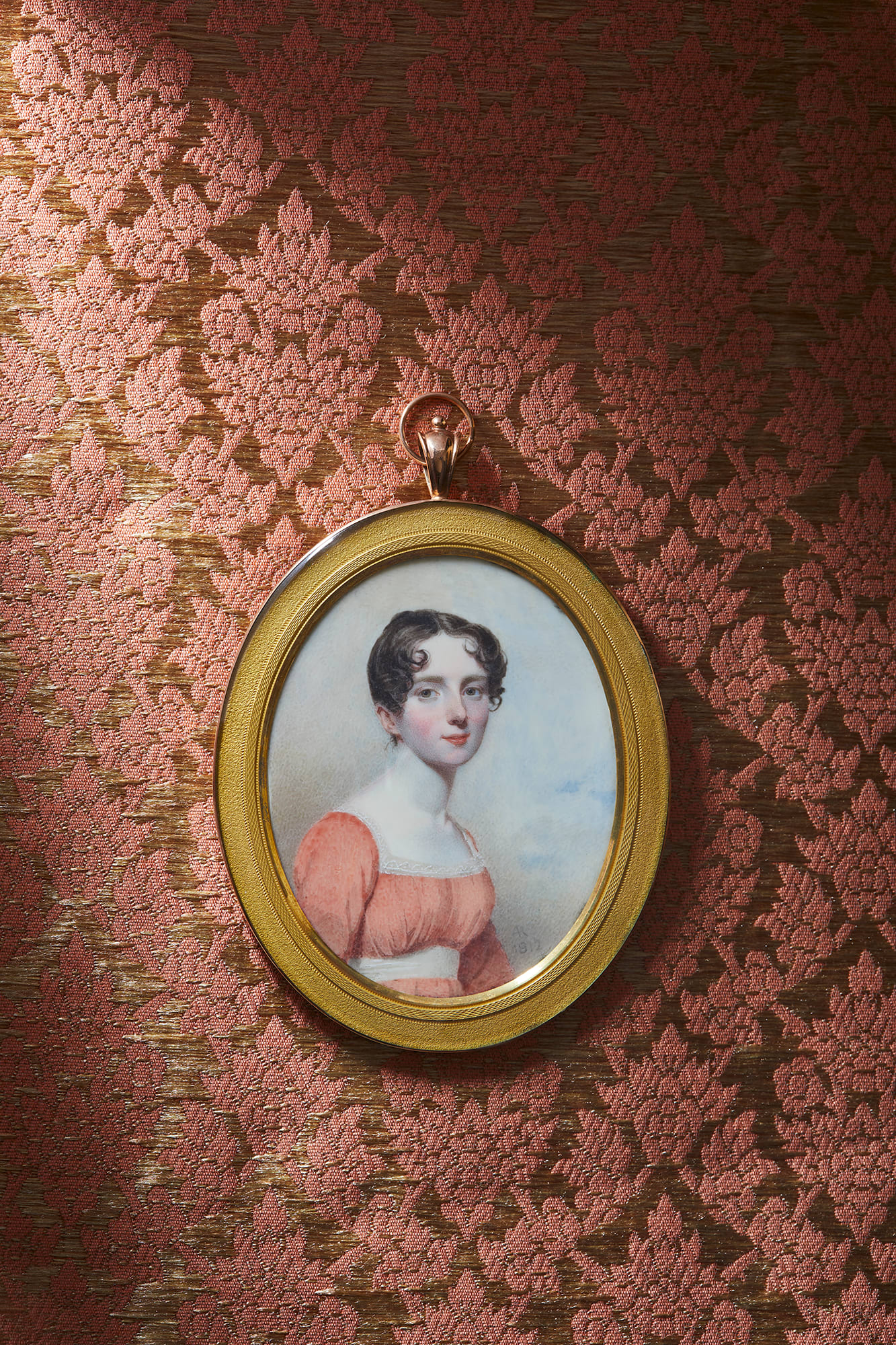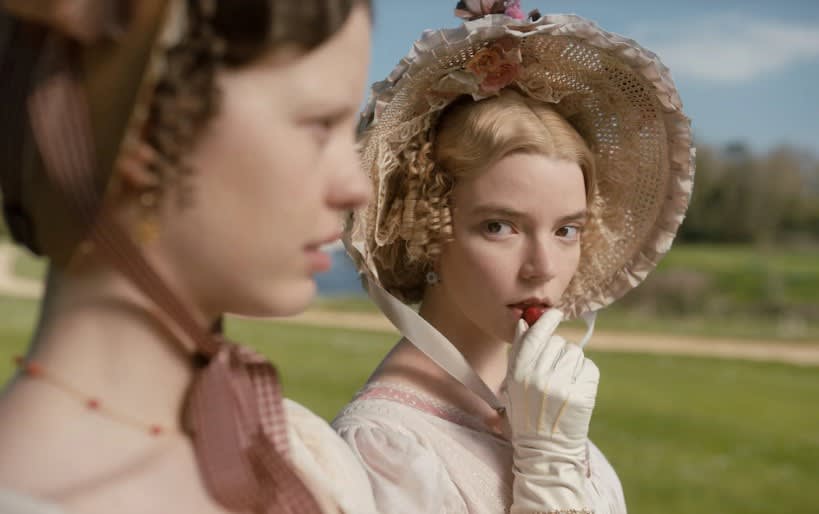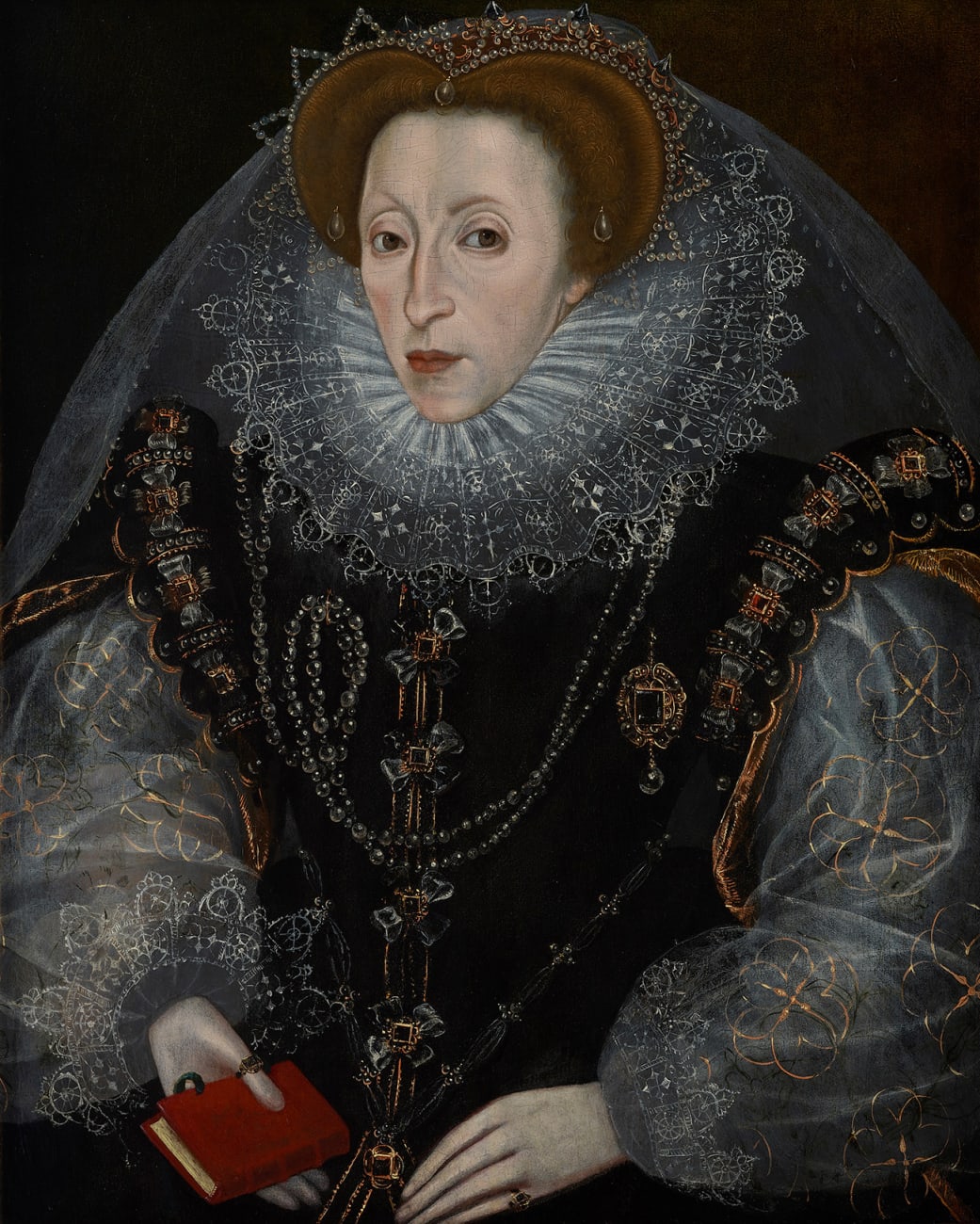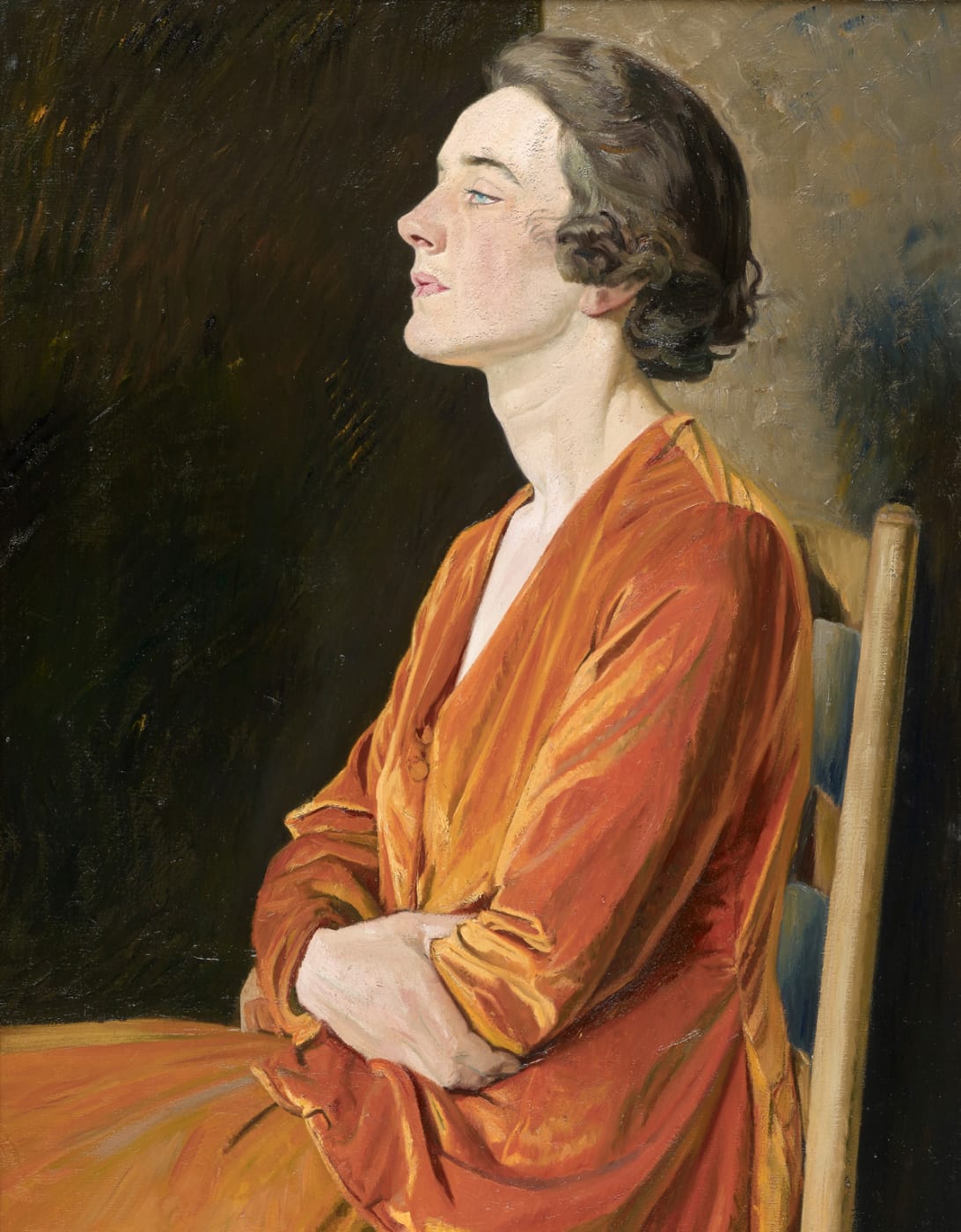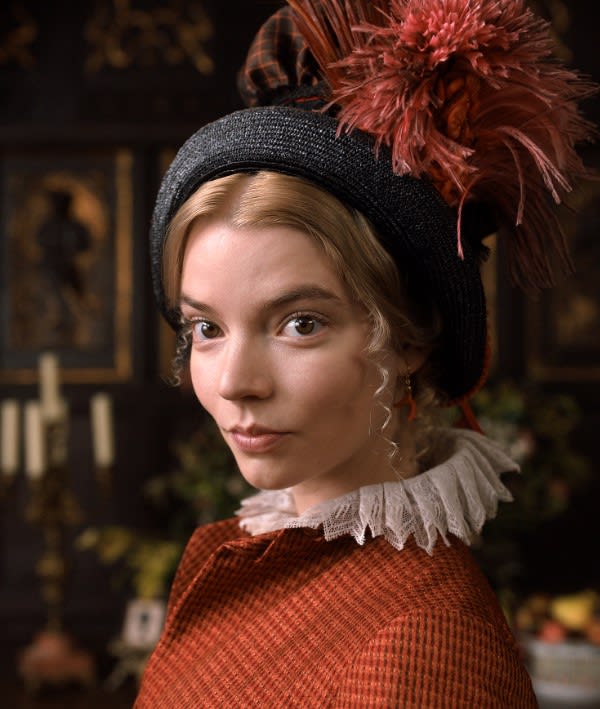
'I like the Gown very much & my Mother thinks it very ugly.'[1]; Dressing Jane Austen's Emma
Watching the new film adaptation of Jane Austen's 'Emma' (Autumn de Wilde) in the cinema last week, I was struck by the fantastic vivacity of the costume - particularly the women's - which illuminated the screen. There was hardly a plain white muslin dress in sight - and where they appeared, they were covered by bright coats or accessorised with shawls or gold hair baubles swinging from curls or swags of hair. The Oscar winning costume designer Alexandra Byrne was responsible for this riot of colour. In a recent interview she stated "I wanted to remind people how much colour there was at that time. We're accustomed to faded dresses in museums and we think that's what the colours were, but colours were how you showed your wealth. It might seem like I'm exaggerating colour, but there was a great attraction to colour in the 19th century. There's been a weird decision in filmmaking to tame it."[2]
Although much of the fashion in the film seems to border on the eccentric, Byrne took her inspiration from fashion plates of the early 19th century. She could equally have turned to portrait miniatures for her ideas. Painted at this date in watercolour on ivory (Austen wrote Emma in 1815), miniatures were less expensive and often thought of as more ephemeral than oil paintings. Accordingly, sitters often wore the most fashionable item in their wardrobe. Fleeting trends, such as the craze for coloured hair powder in the late eighteenth century, are only recorded in portrait miniatures, and not in expensive oil paintings (fig. 1).
Portrait miniatures were often commissioned as part of the ritual of semi-public courtship in the late eighteenth and early nineteenth century. Considering that in Austen's time women usually married in their late teens, those young women (as is the case today) wanted to look fashionable and feel confident. When it comes to betrothals, Austen's novels naturally follow the convention of the time, when girls between the ages of fifteen and nineteen were 'out' and on the marriage market (providing Mr and Mrs Bennet in Pride and Prejudice with the headache of controlling all of their five daughters 'out', including the wayward Lydia who marries Wickham at the age of sixteen).
Hairstyles in the film adaptation of Emma also seem outrageously impractical, but as can be seen in some early nineteenth century miniatures the tight curls and bows made of hair were indeed worn by women. In this portrait miniature of a lady called Clementina Herbert by the artist Thomas Hargreaves, datable to circa 1820, her hair is curled and then pinned in rolls on her head. She wears a high-waisted white dress with a long gold chain to hold a miniature tucked into her belt (fig. 2).
The white muslin dresses worn in the film (fig. 3) were fairly ubiquitous in this period and by the time Austen wrote Emma, they had been in fashion for almost twenty years. This portrait of a young woman by William Wood was painted circa 1805, the sitter wearing an empire-line dress with a gold sheaf of corn placed over her heart to indicate her affection for the recipient of the miniature (fig. 4).
These dresses often attracted ridicule, particularly when they were first in fashion in the late eighteenth century. Highly impractical for the British climate and thought to be outrageously tantalising to the opposite sex, cartoonists enjoyed imagining, for example, the effects of blustery weather on such a garment (fig. 5).
By time Emma was published, women were also wearing bright colours of all hues. These show-stopping dresses were covered with long coats outside the home, often in a clashing tone. This portrait by Andrew Robertson, probably of the actress Fanny Kelly (C1209) dated 1812, portrays her without jewellery but wearing a bright coral gown, the intense colour broken with a white belt and delicate lace neckline. Looking back to the Regency Period, the dandy Captain Gronow stated; 'The young ladies were remarkable for their taste in dress…varied hues, so admirably blended, that the eye was charmed with their richness of colour' [3]. Jane Austen's brightly-coloured world has certainly been brought to life in this latest film adaptation.
The portrait miniatures illustrated here will be available for sale during our exhibition 18-25 March 2020 at the Philip Mould Gallery, 18-19 Pall Mall and via our online gallery.
[1] Jane Austen in a letter to her sister Cassandra, October 27, 1800
[2] Interview in The Telegraph, 14 February 2020
[3] Reminiscences of Captain Gronow,Captain Rees Howell Gronow, 1862
